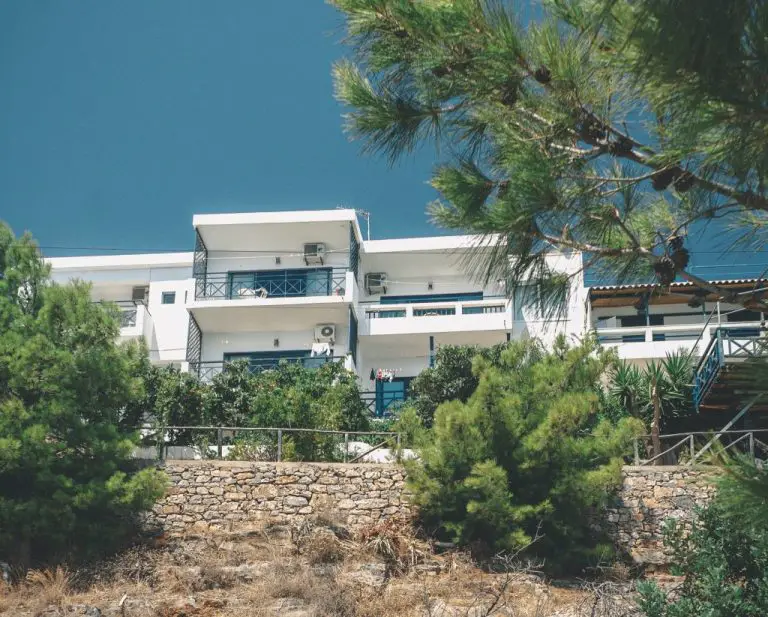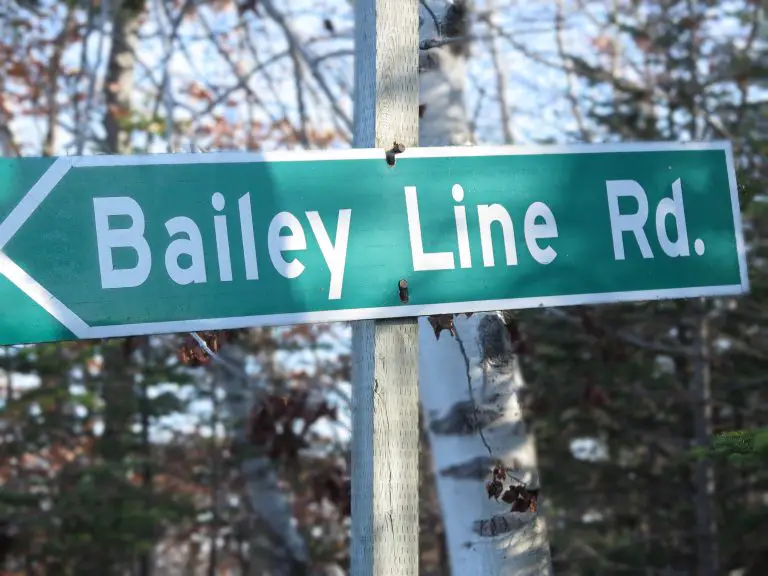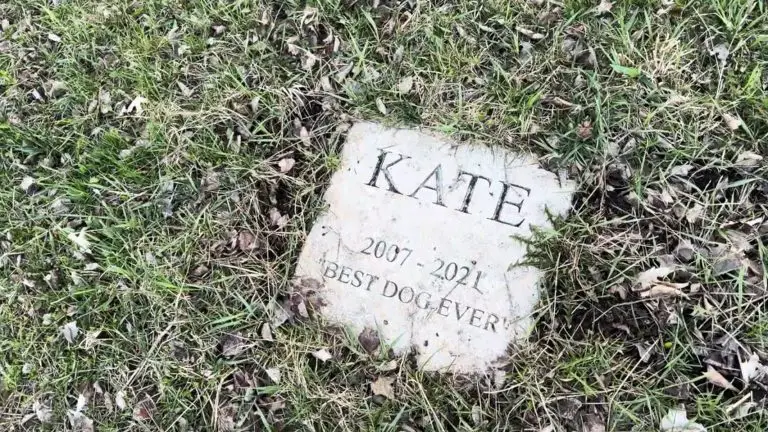This is the third chapter in our story about moving from the city to a rural property on Manitoulin Island 30 years ago, and the adventures of living here since. Click here to go back and read Chapter Two.
THE BAILEY LINE ROAD CHRONICLES: CHAPTER THREE – THE BAILEY LINE ROAD FEUD
It’s impossible to know everything about a country property before you buy it. There’s always an element of the unknowable. Full knowledge takes way more time to grasp than it does to size up a place initially and make an offer as an outsider. In fact, it’s impossible to know even some of the most basic things before your name gets put on a property deed. Some of our own property-related surprises have been good and some not so good. The good surprises that came with our place vastly outnumber the bad, too. I’m thankful for our proximity to the spectacular Lake Huron shoreline, the fertility of the soil and the decent people we’ve met nearby and made friends with over 30 years. I’ll tell you all about these later. But there’s been a few bad things, too. I couldn’t have known about them before choosing this place, but one bad thing in particular taught me a lot about the value of forgiveness and what it takes to keep neighborly relations between rural households. This bad thing has passed now – it’s buried in our township graveyard – but it was a pretty big deal for our first 10 years on Manitoulin. In fact, it was a heavy black cloud.
I’ve told you about Ivan Bailey before. He was the old timer who grew up on our property and who lived in a house about 150 yards to the west of where we would build our place. Three hundred yards to the east was another branch of the Bailey family. They lived on the other side of the road, further up, and the head of the household was named Weldon. He was a second cousin of Ivan’s (there are lots of cousins here), and Weldon was also Ivan’s sworn enemy. I very soon came to know that Weldon never uttered Ivan’s name in conversation. He just called him “that guy”, pointing down the road in a westerly direction with a tilt of his head. Ivan also never uttered Weldon’s name. He just called him “that guy”, pointing in an easterly direction with a tilt of his head.
 I should mention that none of the roads on western Manitoulin Island had any names at that time. There was no “Bailey Line Road”. The highways were numbered, but officially speaking the back roads were nameless. Everyone explained where they lived by the coordinates of history and settlement. My land was called “The Ivan Bailey Place”, even though Ivan hadn’t owned it for 12 years before I bought. Nobody usually called our road anything at all, except occasionally “the Bailey Line”. That’s a throwback to the days when almost everyone who lived on the road was named Bailey. For the most part, people just knew where Ivan Bailey had lived and grew up. Same thing for every other places around. No road names, just the names of families and where they traditionally lived.
I should mention that none of the roads on western Manitoulin Island had any names at that time. There was no “Bailey Line Road”. The highways were numbered, but officially speaking the back roads were nameless. Everyone explained where they lived by the coordinates of history and settlement. My land was called “The Ivan Bailey Place”, even though Ivan hadn’t owned it for 12 years before I bought. Nobody usually called our road anything at all, except occasionally “the Bailey Line”. That’s a throwback to the days when almost everyone who lived on the road was named Bailey. For the most part, people just knew where Ivan Bailey had lived and grew up. Same thing for every other places around. No road names, just the names of families and where they traditionally lived.
Bailey Line Road came to have a name when the Ontario-wide 911 emergency municipal addressing system was instituted in the late 1990s. Until then we had no central dispatch system for ambulance, police and fire service. In fact, the only ambulance service we had came from volunteers living in the area who happened to take a course on driving an ambulance. Our nearest ambulance driver lived 12 miles away just outside town. In the event of an emergency, they’d get in their car, drive several miles into town, fire up the ambulance, then drive to the Noland place, the old Blackburn farm, or the Witty ranch – whatever was needed. As far as I know, these people didn’t get paid and they had no medical training to speak of. Of course they all knew where the old Blackburn place was, or that Harry Noland lived on the edge of the Noland flats along the west side of Mills Township.
As adequate as all this was for homegrown ambulance, fire and police services, it would never do when central dispatching took over from the big city of Sudbury three hours away. For that to work, we needed proper road names and proper numbered addresses. Bailey Line Road got it’s name because nearly every household that ever existed on that road since it was cut out of the forest in the 1880s had the name of Bailey. The only exception to this was the pioneer family on my own place by the name of Taylor. They got the land in its primitive state from the government, and earned clear title after building a house and bringing 5 acres of forest under cultivation within five years. The Taylors owned the property for 10 years from 1890 to 1900. After that it was all Baileys. Three Bailey brothers owned all the farms along the road. Occasionally our road was called “The Bailey Line” in the olden days, so when it came time to name it officially for the 911 emergency system, it was branded Bailey Line Road by someone somewhere.
I was introduced to the Bailey Line Road feud a day or two after I set up the tent on my property and started feeling like the whole Manitoulin homesteading thing was a huge mistake. What could be worse than buying a useless piece of property in pursuit of an impossible dream, only to find that you’ve bought right between two factions of a family that have been feuding for two generations?
One evening while I was enjoying a supper of canned Niblets corn in the cab of my 18 year-old F250 pickup, I noticed a herd of Hereford beef cattle happily grazing in my front field. I didn’t know where they’d come from, but I went out to greet them. I guess they knew they were trespassing because the dozen animals immediately walked back out onto the road as I came up to them (all the fences were tumbled down at this stage), and sauntered down the gravel towards Weldon’s house, then into his barnyard. I realize now that it was rather amazing the cattle went right back home like this. I’ve chased cattle many times since then, and invariably they always go where they shouldn’t.
There were three reasons I wasn’t mad that someone else’s cattle was eating my grass:
- I had no use for the grass myself. Might as well let some cattle have a snack.
- I was too new in the area to get mad. I keenly felt my status as an outsider and I knew enough not to give myself a reputation for being a hot head right from the outset (or any time for that matter).
- The cattle were beautiful to watch. I’d never seen a bunch of cattle hungrily eating fresh grass after surviving on nothing but dry hay in a barnyard all winter. I could sense their pleasure and it’s something I still appreciate today. If you ever get the chance to watch cattle on fresh grass, you’ll know what I mean.
 I’d never met Weldon before. I didn’t even know his name because it was too faded and illegible on his dented, tilted, steel mailbox at the end of the driveway. All I knew was that this guy came out to meet me as his herd of cattle walked magically in front of me, back through the break in the fence they came out of. I like to think he was impressed that I could do that, even though it was dumb luck.
I’d never met Weldon before. I didn’t even know his name because it was too faded and illegible on his dented, tilted, steel mailbox at the end of the driveway. All I knew was that this guy came out to meet me as his herd of cattle walked magically in front of me, back through the break in the fence they came out of. I like to think he was impressed that I could do that, even though it was dumb luck.
After piling up the broken cedar rails where the cattle had gotten through the fence to get out, Weldon invited me into his house. Weldon’s wife, Judy, and their two boys, Arthur and Kenny, were eating a dinner of whitefish and fried potatoes. Weldon’s dead now, but at the time he was big and strong and handsome, with a square jaw and thick black hair. He reminded me of a movie star. Think of Gaston in the animated version of Beauty and the Beast and you’ll get a sense of the Weldon of 1986.
It’s not every day that a young guy from Toronto buys the property just down the way from you on a backwoods road in a backwoods corner of a little-known island where nothing much changes, so naturally I found myself on a polite hot seat for questioning in Weldon’s kitchen:
“Are you planning to build?
“Where are you planning to build?”
“What will you do for a living?”
“Will you farm? Don’t try farming. It doesn’t pay.”
“How did you find this place?”
“Have you met “that guy” down the road?”, delivered with that tilt of the head I’d come to see again and again. “He’s crazy.”
You’ve probably heard about the famous feuding families the Hatfields and the McCoys. As I sat in Weldon Bailey’s kitchen, a sick feeling slowly crept over me. Living between two, well-armed branches of the same family that won’t even say each other’s names in conversation has certain dangerous ramifications. How will I avoid taking sides in all this? Any failure on that front would make an enemy for me, either towards the west or the east. And besides, how bad was this feud, anyway? Over the years I came to know the answer and it involved a lot of unforgiveness and even a few gunshots.
There’s no anonymity in the countryside, and you can’t easily get away from people who bother you. Either you learn to forgive and forget, or bad feelings build up, take over and turn ugly. There will always be occasions that will offend you. It’s what you do about them that matters.
While it takes no work at all to avoid meeting people who’ve offended you in the city, in the country it’s a different matter. You see them all the time whether you like it or not. The bank, the grocery store, the gas station – sooner or later you’ll meet up regularly. And even when you don’t actually see people who’ve slighted you, if they live close enough you can hear them cutting firewood, starting up their tractor, or plinking cans with a 22 rifle.
In the end, we managed to stay friends with both Ivan and Weldon, but I did learn valuable things from watching their feuding dynamic. How did this feud begin? My understanding is limited, but I’ve heard it involved some transgression with a radio back in the 1930s. Near as I can tell, one branch of the Bailey family broke a radio owned by the other branch. The issue was not handled with sufficient honesty, grace and forgiveness, so bad feelings were planted and they grew. All this happened when Ivan was a young man and Weldon was a baby. The feud originally involved Weldon’s father, Art, and Ivan himself. Ivan’s father, Isaac, never was involved. Weldon always spoke well of his “Uncle Ike”.
Another part of the feud seems to have something to do with Ivan’s mother. As Ivan explained to me, she died in the 1940s of a heart attack. It came over her as she was working in the vegetable garden and she sat on the ground and leaned up against a big old oak tree that’s still in the yard today. As her chest pains grew worse, she lay down. Ivan ran over and started pounding on her chest – a primitive form of heart massage. It didn’t work, and Ivan’s mother died in his arms at the foot of that tree.
The feud-darkened side of the story as I heard it later implied that Ivan was beating his mother up. Besides being highly unlikely, I don’t think that’s true because of the misty-eyed look that came over Ivan as he told me about the death of his mother nearly 50 years after it happened. At any rate, hard feelings always grow harder unless someone decides to put them to rest.
I know all this sounds petty and contrived, but before you go judging this situation too harshly, realize that it’s harder to stay friends in the country than it is in the city. Much harder. You get to know a lot about people in a rural community, and it’s easy to take offense and nurture it into something ugly if you don’t have an offense-resistant heart. Getting along with your city condo neighbours by ignoring them and never seeing them is no particular moral virtue.
 As I discovered over the years, the Bailey Line Road feud was quite dark. Ivan told me about the time he was walking out to the road to get his mail one day when a couple of slugs from a 30 caliber deer rifle whizzed passed him and blasted through the metal mailbox right in front of him, fired from the east. Once, during our own time on the property, while living in the 10×20-foot shed I built while Mary and I were building our stone house, we were awoken at 7am by the sound of a shotgun blast. Ivan had shot Weldon’s dog, Sport, as the creature had walked over to leave “something behind” on Ivan’s lawn. The dog was knocked down by the blast, but not dead.
As I discovered over the years, the Bailey Line Road feud was quite dark. Ivan told me about the time he was walking out to the road to get his mail one day when a couple of slugs from a 30 caliber deer rifle whizzed passed him and blasted through the metal mailbox right in front of him, fired from the east. Once, during our own time on the property, while living in the 10×20-foot shed I built while Mary and I were building our stone house, we were awoken at 7am by the sound of a shotgun blast. Ivan had shot Weldon’s dog, Sport, as the creature had walked over to leave “something behind” on Ivan’s lawn. The dog was knocked down by the blast, but not dead.
In Ivan’s defense, I don’t think he meant to hurt the dog seriously, just teach it a lesson with a few stray pellets of #6 birdshot. This was now 1988 and Ivan’s wife, Dorothy, had died back in 1986. Ivan had a new live-in girlfriend 30 years his junior (it’s amazing what these muscular old country guys can accomplish sometimes) and Marjorie was her name. Ivan explained to me later that Marjorie had goaded him on to “teach that dog from coming around here”. I guess the choke on Ivan’s shotgun was tighter than he realized, and the dog got a pretty heavy hit. Both Marjorie and Ivan felt badly right away and they called me on the party line telephone. Would I come and help Marjorie take Sport to the vet? As I sat in the back seat of Ivan’s new Crown Victoria, holding Sport as trickles of dog blood dripped onto the blue velour fabric, I felt sick for more than the obvious reasons. What had I wander into here? Shooting dogs on a Saturday morning! That never happened with the folks in Walnut Grove and Little House on the Prairie.
As an aside, Sport had some pretty hard luck in his life. A few years after the shotgun blast, Weldon was cutting hay with a sickle blade mower on his old Massey Ferguson tractor. A mower like this more or less disappears in the hay as it cuts. All you see to one side of the tractor is the hay jiggling a bit as it gets severed from the roots. Sharp blades do all the work down near the ground. Unconcerned about dangers as dogs often are, Sport happened to wander in front of the mower and his leg got cut off cleanly below the first joint before Weldon hit the clutch and stopped the machine. Another trip to the vet, more healing, and Sport enjoyed a long and seemingly happy life on three legs after that. Isn’t it amazing how dogs never feel sorry for themselves or their circumstances?
In the end, the dog healed fine from the shotgun blast, but the feud descended new new depths. The people concerned never believed that Ivan had hit the dog harder than he intended with the shotgun blast. Ivan had a well-deserved reputation as an excellent hunter and they simply couldn’t accept (or didn’t want to accept) that he misjudged the pattern of shotgun pellets. I know shotguns too, and I know how hard it is to aim off the target intentionally with any degree of accuracy, while still directing a few pellets onto the mark. Either way, the situation wasn’t good. Ultimately the police were called to investigate, but the law is clear. Any rural property owner has every right to shoot any dog that comes on his property with no justification except the trespass. Ivan was in no legal trouble, but the Bailey Line Road feud hit new lows. There was real anger now, and not just a steady boil of animosity. I braced myself for retaliation. A few years later, when Ivan accidentally drove off the edge of a winter road and rolled his truck onto its side, members of feuding family happened to be driving by. They rolled down the window and laughed as they drove off while Ivan was trying to climb out the door that faced upwards. You can’t really blame them for laughing I suppose.
Ivan died in January 1995, and Weldon died in a nursing home in the spring of 2017. The feud is old and gone now, with the only Bailey living on the road being Kenny, Weldon’s youngest son. So what did it teach me to see a family feud flare up, get worse, then die of old age after several generations? A couple of things I’ll never forget. And the first involves a big question . . .
All through history, the natural tendency of human beings is to have their own version of a Bailey Line Road feud. History records the big examples, but there are countless families and communities where feuding happens at a smaller scale. That said, occasionally you’ll see examples of selfless love, unmerited forgiveness, and graceful kindness at work in some people who have been harshly slighted. So the question is this: Where does the will for this kind of “unnatural” behavior come from? I hold no illusions about human nature. Contrary to the hopeful nonsense you often hear these days, people are not naturally good. A quick glance at history proves the depravity of mankind, both on small and large scales.
When I came to Manitoulin Island I had no idea where the unnatural tendency to love and forgive comes from. I only knew that the absence of these things is ugly. Unmerited forgiveness and grace is what real love looks like. It’s what’s required for people to get along with each other when anonymity is not an option, and selfless love of this kind comes only from one source. It takes a connection to this source of love to live out love, but human beings never have this connection from birth. It must be established intentionally through submission to the source of love. How I came to understand this is another story.
Want to be a key part of making The Bailey Line Road Chronicles a published book? I’m looking for a few good patrons to partner with me to complete this project. Just a couple of dollars a month gets you your own copy of the story when it’s done, and your name on “The Patrons” page.
Click here to read Chapter Four of The Bailey Line Road Chronicles – A Welcome Relief













